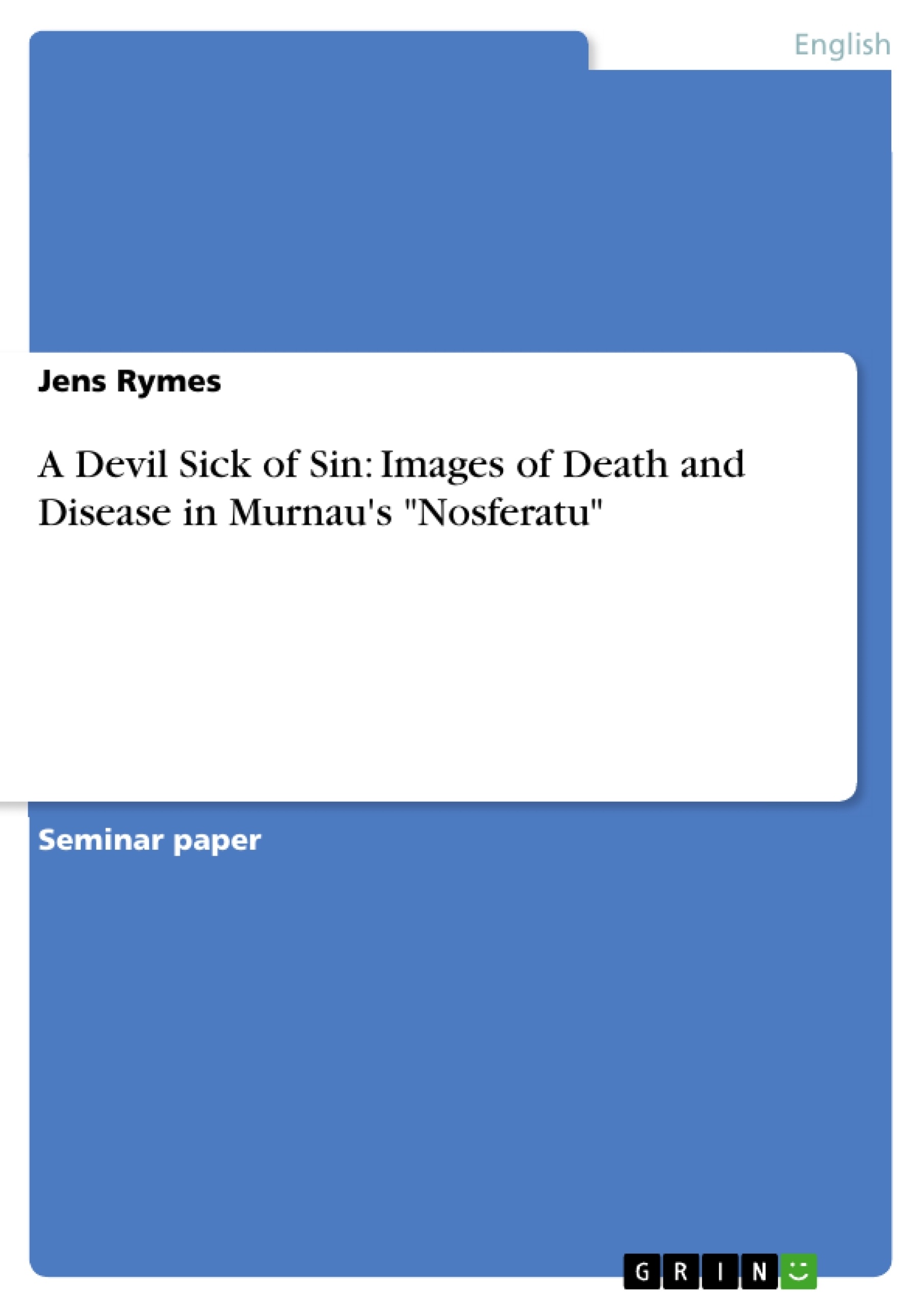1 Introduction
In adapting Stoker’s Dracula, Murnau has made quite a few changes to the original plot. Some of them were made due to economic and practical reasons, such as moving the setting and locations to Germany, some of them in order to avoid charges of copyright infringement, such as changing the characters’ names, as Murnau was not authorised to make an adaptation.
However, Murnau doesn’t simply copy Dracula. Stoker’s novel about the intrusion of an alien evil into English society is transformed into a story mirroring the fears that prevailed in Germany in the late 1910’s. Screenwriter Henrik Galeen and di¬rector Murnau were obviously influenced by the impressions that both World War I and the influenza pandemic had left. The war had left large areas in Central Europe in ruins and had triggered many political changes. Often, the new-founded Weimar Republic was seen as weak and incapable of acting. Moreover, the outbreak of the Spanish Flu in 1918 proved no less devastating, ranking “with the plague of Justinian and the Black Death as one of the three most destructive human epidemics.”(1) Assisted by large troop movements and disastrous hygienic con¬ditions after the armistice, the disease spread across the globe within less than three months. Physicians and scientist were helpless. There was no immunization available: the influenza virus could not be isolated and positively identified as the pathogene until 1932. In fact, even today there are no means of preventing another influenza epidemic(2) .
Murnau begins with a caption that presents the movie as a record of an epidemic: “Aufzeichnung über das große Sterben in Wisborg.” The vampire is not the party animal that Lugosi impersonated; instead, Murnau draws on a tradition that associates vampires with unexpected or inexplicable death. His creature feeds on a society which is defenseless against him, either because its members are too weakened or too terrified to take action. Thus, though set almost one hundred years in the past, Nosferatu presents an actualisation of Dracula.
[...]
______
(1) Potter, C.W. “A history of influenza”. Journal of Applied Microbiology 31. 2001: 575.
(2) cf. ibid., 572.
Table of Contents
- Introduction
- Inside, Outside
- Death and Disease
- Invisibility
- Ubiquity
- Paralysis
- Conclusion
Objectives and Key Themes
This paper examines the film Nosferatu, a German adaptation of Bram Stoker’s Dracula, through the lens of its historical context and the societal anxieties of the time. It aims to explore how Murnau’s film reflects the fears and anxieties of Germany in the aftermath of World War I and the influenza pandemic.
- The impact of the influenza pandemic on the portrayal of death and disease in the film
- The symbolic representation of the vampire as an embodiment of an abstract threat
- The exploration of themes of isolation, fear, and paralysis
- The juxtaposition of the inside and outside, and the vampire’s position as an outsider
- The film's relevance to the contemporary political and social landscape
Chapter Summaries
- Introduction: This chapter introduces the film Nosferatu and its historical context, outlining the influence of World War I and the influenza pandemic on the film’s themes and narrative.
- Inside, Outside: This chapter explores the contrast between Count Orlok's appearance and behavior in Murnau's film and Dracula's portrayal in Stoker's novel, highlighting the vampire's role as an outsider and his symbolic representation of a greater threat.
- Death and Disease: This chapter examines the connection between the vampire's journey by ship and the historical spread of the Plague, comparing it to the influenza pandemic of the time. It explores the film's depiction of death and disease as a consequence of the vampire's presence.
Keywords
The main keywords and focus topics of the text include: Nosferatu, German cinema, Dracula adaptation, influenza pandemic, World War I, societal anxieties, death and disease, isolation, fear, paralysis, outsider, symbolic representation, historical context.
- Quote paper
- Jens Rymes (Author), 2004, A Devil Sick of Sin: Images of Death and Disease in Murnau's "Nosferatu", Munich, GRIN Verlag, https://www.grin.com/document/45796



